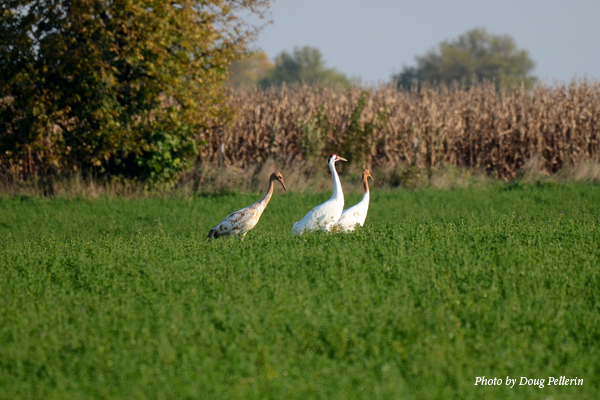
Media contacts: Pamela Seelman, 608-356-9462 ext. 120, International Crane Foundation; Wade Harrell, 361-676-9953, U.S. Fish and Wildlife Service
Whooping Crane eastern population sees the best year yet for wild-hatched chicks
Good news as western Whooping Crane population tops 500
Six wild-hatched Whooping Crane chicks in Wisconsin survived to flight stage in 2018, the most since the Whooping Crane Eastern Partnership began restoring a migratory population of the endangered birds in the eastern United States.
The good news comes as the number of endangered wild Whooping Cranes in the west topped the 500 mark, with an estimated 505 Whoopers in a population that migrates from nesting grounds at Wood Buffalo National Park in Canada to winter habitat in Aransas, Texas.
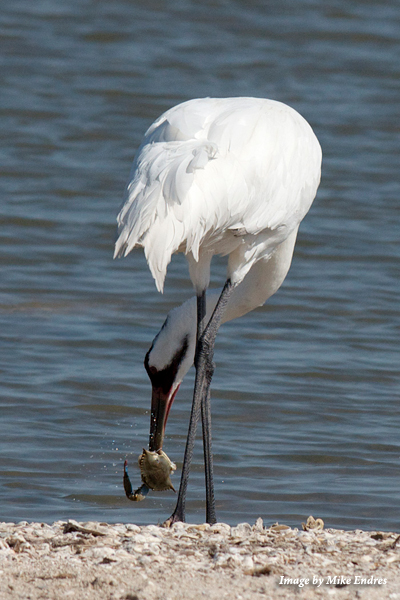
Before the partnership began work, Whooping Cranes had not nested in the eastern United States since the late 1800s. The effort to bring them back began in 2001 when WCEP partners reintroduced seven captive-raised young Whooping Cranes in Wisconsin, where Whoopers last nested in 1841. Using costumed humans standing in for adult cranes, and ultralight aircraft as guides, partners raised the young cranes and taught them the migratory route to Florida. The eastern migratory population in the wild now numbers about 100.
Five of the six chicks that hatched in the wild and survived to flight stage in Wisconsin this year are offspring of Whooping Cranes released by WCEP in previous years. The sixth was a chick with one parent that was wild-hatched in 2010. Until 2018, the highest number of surviving wild-hatched chicks in the eastern population was three, in both 2015 and 2016. WCEP members, who continue to work to refine techniques to enhance chick survival in the wild, celebrated the progress.
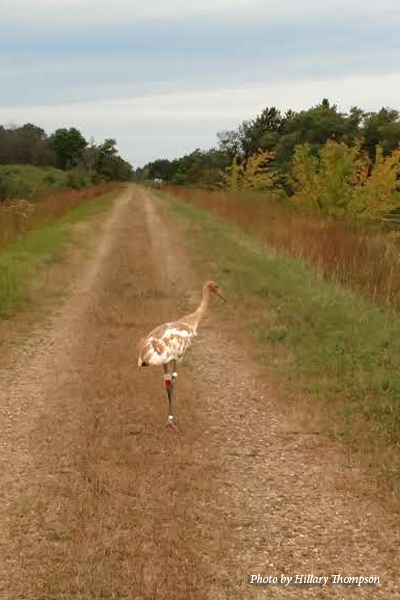
“One of our biggest challenges with this population has been survival of chicks after they hatch,” said Kim Smith, chief operating officer for the International Crane Foundation, a WCEP member. “The partners are working hard to find methods that increase the chances that wild-hatched chicks live to fledge. We are encouraged to see this many chicks survive this year.”
Smith said the partners are employing techniques like double clutching, in which eggs laid early in the nesting season are removed from wild nests to captive-rearing facilities, prompting wild cranes to lay a second clutch later in the spring. This avoids the worst of the black fly season, which has been linked to mortality in crane chicks. Other methods include rearing of captive chicks by adult cranes in captivity and otherwise reducing exposure of chicks to humans.
“We’re hopeful that as we continue to fine-tune our management practices, the number of surviving wild-hatched chicks will grow in response,” said Smith.
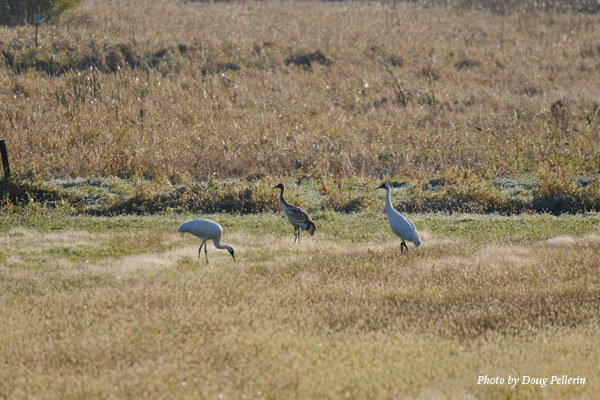
To supplement the wild-hatched chicks, four chicks raised by cranes in captivity were released into the wild in Wisconsin near adult Whooping Cranes; three of those chicks survive. The goal is for the foster parents to adopt the chicks and lead them south on their first migration this fall. Two of the chicks were captive-reared at White Oak Conservation in Florida and transferred to Horicon National Wildlife Refuge in Wisconsin with their parents last month.
Most of the eastern migratory population spend summer months in Wisconsin, although some of these cranes may also be spotted in neighboring states. In October, the birds begin heading south, spending winter months from Indiana south to Florida.
The eastern migratory population was established to support the recovery of Whooping Cranes nationwide. The largest number of Whooping Cranes in the United States is a population that migrates between Canada and Texas. This spring, an estimated 505 Whooping Cranes arrived at wintering grounds in Aransas, Texas. This marks the sixth consecutive year that this population has increased and the first time the count has topped 500.
“We are certainly encouraged to see the nesting success in the eastern population, in addition to the number of cranes in the Canada-Texas population,” said Wade Harrell, whooping crane recovery coordinator for the U.S. Fish and Wildlife Service, a WCEP partner. “All efforts contribute to our goal of helping the nation’s whooping crane populations continue to grow.
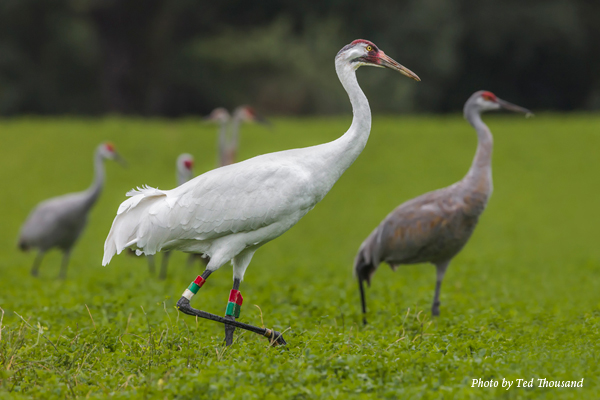
In addition to the eastern and western migratory populations, partners are working to establish a resident population in Louisiana, in an area Whooping Cranes inhabited until the 1940s. This population now numbers more than 60 birds and will receive additional chicks for release this fall from the International Crane Foundation and the Freeport-McMoRan Audubon Species Survival Center in New Orleans.
Whooping Cranes once were found across North America. Now they are among the rarest birds on the continent. Loss of habitat and unregulated hunting caused Whooping Cranes to decline throughout their range; by 1941, only 15 remained. Work by federal and state agencies, non-governmental and conservation organizations and individuals helped stave off extinction, and numbers have slowly climbed since then. Efforts to recover the species include protection of habitat, captive breeding programs, reintroductions in the wild, research and monitoring.
If you spot a Whooping Crane, WCEP partners encourage you to keep your distance and report your sighting. You can find more information about Whooping Cranes and the Whooping Crane Eastern Partnership at bringbackthecranes.org.
